Cultural Triangle
Sri Lanka’s Cultural Triangle has enthralled millions of travellers. It covers the north-central towns of Anuradhapura, Polonnaruwa, Sigiriya and Dambulla where extensive archaeological ruins, protected as World Heritage Sites, provide a glimpse into the island’s history. It is here that Sri Lanka’s kings developed remarkably advanced civilisations. The shimmering central plains have low rainfall and several hotels are sumptuous enough to provide a holiday in their own right.
Weather
The cultural triangle is largely situated within a dry zone. Apart from a high rainfall in November and December when the less-severe Maha monsoon hits the east coast, conditions remain fairly arid, although visitors during June and July may experience the hot, strong winds that help keep the south-western monsoon in the south and west at bay. Sri Lanka is affected by two separate monsoons which generally means that there is usually good weather somewhere on the island. Traditionally, the best time to visit the west and south coasts and hill country is from December to April, while the best weather on the east coast is from April/May to September.
Getting There
The cultural triangle can be reached directly from Colombo, although from the airport it may be advisable to head via back roads to Kurunegala, avoiding the main Kandy road at busiest times. The quickest way to Anuradhapura is beyond Negombo up the north-west coast. The route from Kandy takes you via Matale.
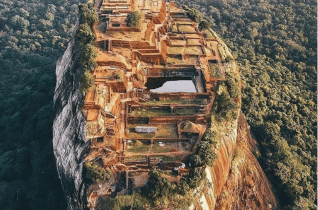
Sigiriya Rock Fortress
Sigiriya is one of the most dramatic and inspiring historical locations in the world, a huge rock fortress rising impossibly from Sri Lanka’s central plains, and possessed of a glorious history that has caused millions of travellers to gape in wonder.
This fortress-palace was built atop a towering rock in the 5th century, and a legendary past of feuding dynasties enhances its striking setting. A UNESCO World Heritage site, worthy of being called the “8th wonder of the world”, Sigiriya is Sri Lanka’s answer to the Taj Mahal and will astonish anyone with its staggering engineering, ancient frescoes and beautiful views across a shimmering landscape.
Duration: 3 hours
Best time: Year-round

Dambulla Cave Temple
Dambulla Cave Temple is one of the most popular religious cultural sites in Sri Lanka, attracting tourists from across the globe. A sacred pilgrimage site for 22 centuries, it is the largest, best-preserved cave-temple complex in Sri Lanka. This World Heritage site has the largest number of Buddha statues all housed in one place, including a colossal, 14-metre-long figure of the recumbent Buddha carved out of the rock.
The temple centres upon five cave shrines about 110m above ground level. Its rock ceiling is one large sweep of colourful frescoes, some of which date back over 2,000 years, which depict Buddhist mythology, and the tales of the Buddha’s previous births. Here are some of Sri Lanka’s most important religious statues and paintings.
Duration: 1 hour
Best Time: Year-round

Anuradhapura
Explore Anuradhapura’s timeless ruins by visiting the ‘Sacred City’ Archaeological Park that reflects Sri Lanka’s historical heritage, ancient civilization and the dawn of Buddhism. Get connected to ancient times and reflect to the time of kingdoms and glory.
It has the main sights of Jetavaranamaya, Thuparamaya, Samadhi Statue, Abhayagiriya, Ratna Prasada Guard stone, Moonstone, Folk Musuem and Kuttam Pokuna. This complex require a bit of walking from one site to another, therefore, go prepared with comfortable clothing, sunscreen if sensitive to the sun and with socks at hand since you will have to remove your footwear in certain areas and walking bare foot on the hot sand or paving stones can hurt your feet. Tickets are sold at the Archaeological Museum which is open daily from 8:30am to 5:30pm but closed on Tuesdays.
Duration: 3 hours
Best Time: Year-round
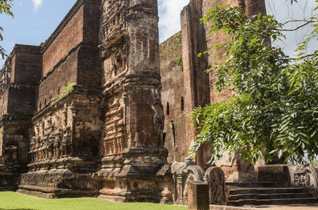
Polonnaruwa
The well-preserved ruins of Polonnaruwa, Sri Lanka’s medieval royal capital, are one of the country’s most prominent cultural sites. You can spend several hours wandering freely between the various ruined temples, imposing Buddha statues and royal bathing pools.
First a military base for invading South Indian Chola tribes until King Vijayabahu overthrew them in 1070, Polonnaruwa was subsequently developed into a city by King Parakramabahu I and it became the country’s capital city until the late 13th century. This is regarded as a golden age for Sri Lanka when the kingdom thrived under his visionary rule.
Duration: 2 hours
Best Time: Year-round

Mihintale
Historically recognized as the birthplace of Buddhism in Sri Lanka, Mihintale is believed to be where the Buddhist monk Mahinda, son of India’s Emperor Ashoka, met King Devanampiyatissa in the 3rd century BC. On a June full moon day (Poson), Mahinda preached Buddha’s doctrine to the King and his people, making Poson a special holiday in Sri Lanka and establishing all Poya (full moon) days as holy for Sri Lankan Buddhists. Tourists should note that meat and alcohol are not served on Poya days. This pivotal meeting initiated Buddhism in Sri Lanka, deeply influencing Sinhalese culture, evident in ancient sites like Anuradhapura, Polonnaruwa, and Dambulla Cave Temple.
Duration: 2 hours
Best Time: Year-round

Traditional Sri Lankan Village Safari
Discover the authentic charm of Sri Lankan village life in Hiriwaduna, where simplicity and peace reign. Far from city hustle, villagers embrace earthen living, harmonizing with nature through chena farming. Journey through the village in a bullock cart, then take a boat ride on the lotus-filled Hiriwaduna Wewa, enjoying the views of Sigiriya’s rock fortress. Soak up the abundant birdlife and natural beauty. Refresh with a traditional beli mal drink and savor a flavorful Sri Lankan meal, rich in natural goodness. Experience the tranquil rhythm of rural life in this verdant, fertile community.
Duration: 2 hours
Best Time: Year-round
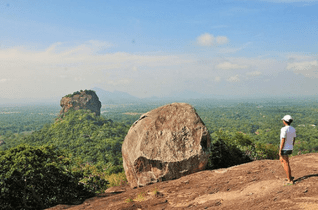
Pidurangala Rock
Pidurangala, a massive rock located a few kilometers north of Sigiriya, shares a rich, intertwined history with its famous neighbor. In the 5th century, King Kasyapa relocated monks from Sigiriya to a new monastery on Pidurangala Rock while building his fortress. The ancient cave temple on Pidurangala houses artifacts reflecting Buddhist, Hindu, and Western influences. The stupa near the temple entrance is believed to be King Kasyapa’s cremation site. The climb to Pidurangala’s summit is more challenging than Sigiriya’s, with steep, uneven steps and boulders to navigate. The summit offers stunning views of the landscape and Sigiriya Rock. Plan for a two-hour visit for relaxation and photos. Pidurangala is less crowded and more affordable than Sigiriya.
Duration: 3 hours
Best Time: Year-round
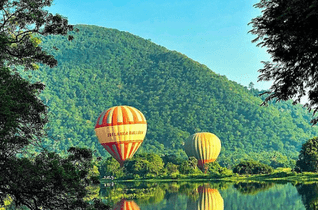
Hot Air Ballooning in Dambulla
Hot Air Ballooning has become the most exciting and thrilling experience in Sri Lanka – for the young and the old. Take flight from Kandalama at Dambulla and enjoy the breathtaking surroundings as you soar and see from a bird’s eye view.
Drift slowly with the wind over the ageless ruins of the Cultural Triangle or animals at a wildlife park . View gorgeous landscapes and jungles and incredible folds of mountains and green forests Soak in daybreaks beneath you giving life and gorgeous sunrises over the lake with roving elephants. Watch bright and colourful birds fly under you as you float swiftly from up above. Look over water buffaloes grazing through the paddy fields or see mischievous monkeys swinging playfully from tree to tree.
Duration: 2 hours
Best Time: Year-round
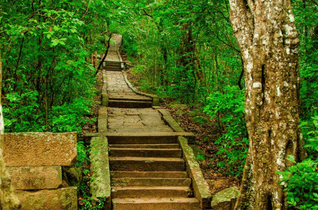
Ritigala
The Ritigala Buddhist Monastery is hidden deep inside the Ritigala Strict Nature Reserve and benefits from being one of the lesser-visited sites in Sri Lanka’s cultural triangle. The ruined monastery dates back to the time of the ancient Sinhalese Kingdom of Anuradhapura. It was once a sprawling monastic complex, abandoned in the 10th and 11th centuries following a series of invasions from India.
Today, some ruins of the monastery still stand – wander through the forest along old paths, painstakingly made using large stone slabs, and lose yourself in the tranquil atmosphere of this beautiful environment as you explore the various relics which remain. Nature enthusiasts will be seduced by the diverse range of flora and fauna in this high-altitude forest, some of which is unique to this area.
Duration: 2 hours
Best Time: Year-round

